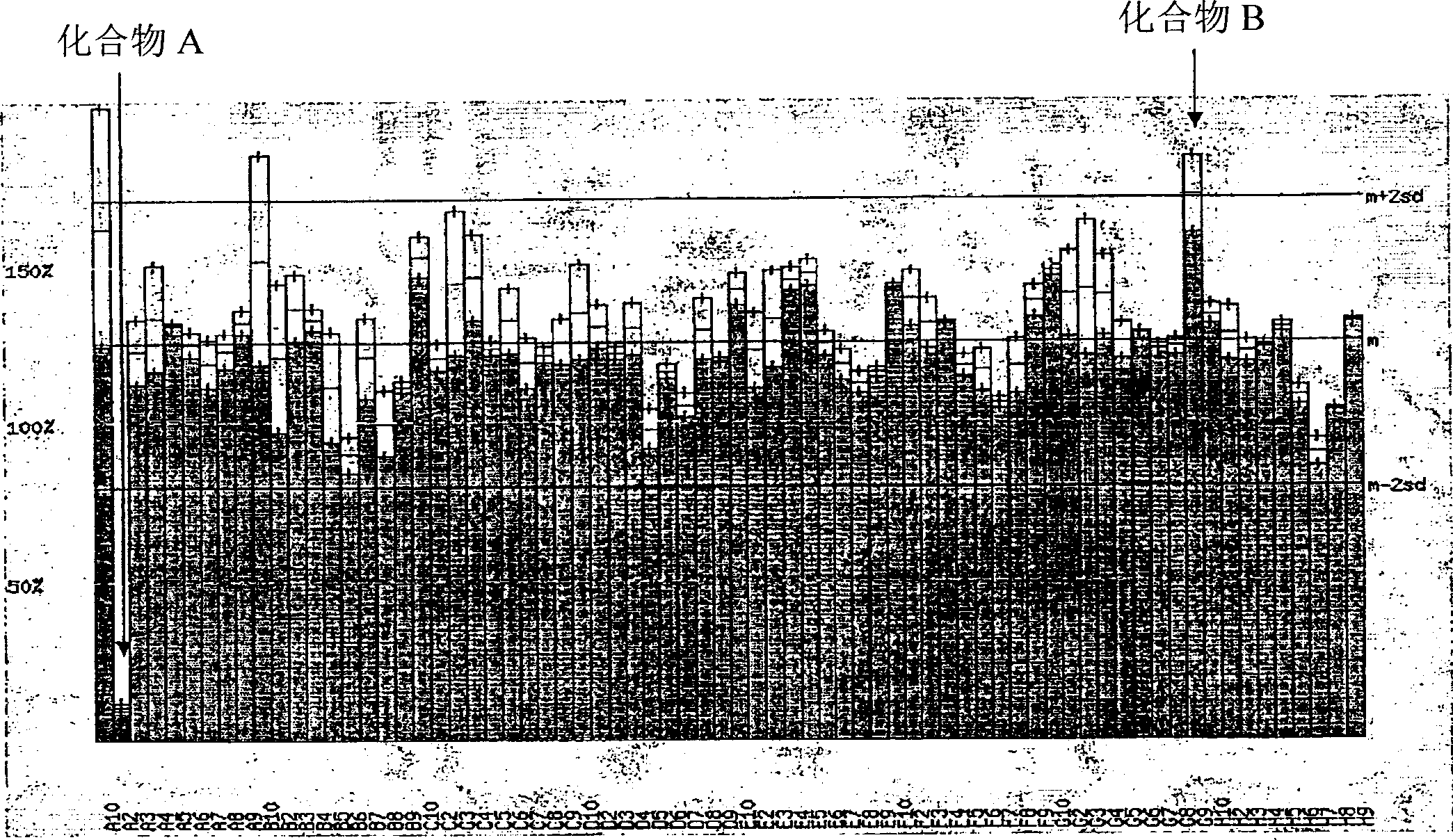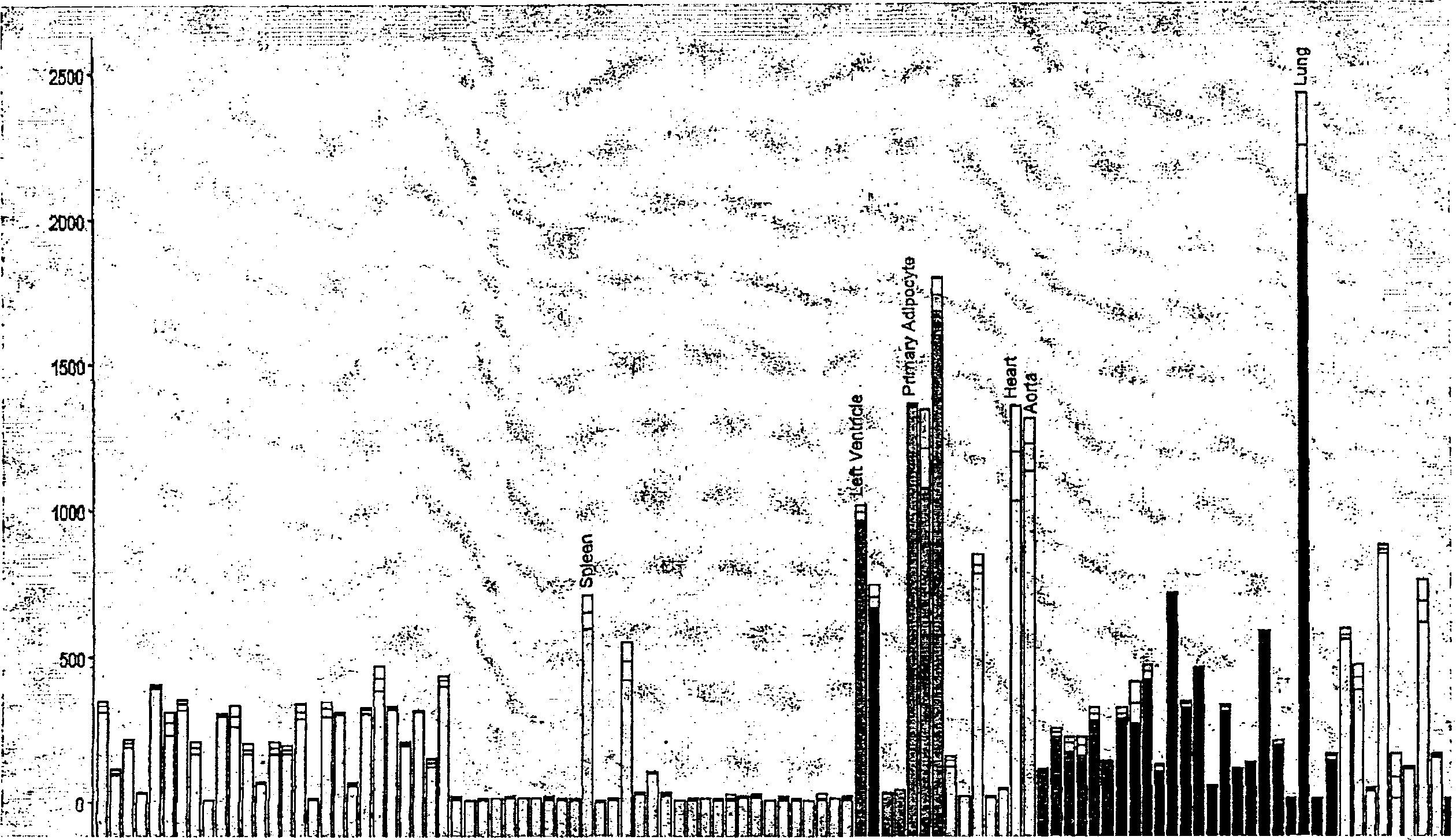Human G protein-coupled receptor and modulators thereof for the treatment of cardiovascular disorders
A modulator, G protein technology, applied in the direction of cardiovascular system diseases, animal/human protein, hormone receptor, etc., can solve the problem of mortality reduction and other issues
- Summary
- Abstract
- Description
- Claims
- Application Information
AI Technical Summary
Problems solved by technology
Method used
Image
Examples
preparation example Construction
[0778] Incorporate activity levels into target molecules 125 The synthetic method of I comprises:
[0779] A. Sandmeyer and similar reactions - This procedure converts an aryl or heteroaryl amine to a diazonium salt (such as tetrafluoroborate) and subsequently reacts with Na 125 I convert it into 125 I labeled compound. A representative procedure is reported by Zhu, D.-G. and colleagues in J. Org. Client. 2002, 67, 943-948.
[0780] B. The ortho position of phenol 125 Iodination - This procedure involves the incorporation of 125 I, as reported by Collier, T.L. and colleagues in J. Labeled Compd Radiopharm. 1999, 42, S264-S266.
[0781] C. Aryl and heteroaryl bromides with 125 Exchange of I—This method is usually a one-two step method. The first step is in trialkyltin halides or hexaalkylditin [e.g., (CH 3 ) 3 SnSn(CH 3 ) 3 ] in the presence of (for example) Pd catalyzed reactions [ie Pd(Ph 3 P) 4 ] or conversion of an aryl or heteroaryl bromide to the correspondin...
example
[0786] The following examples are provided only to illustrate and not to limit the invention. Although specific nucleic acid and amino acid sequences are disclosed herein, it is believed that one skilled in the art will be able to modify these sequences slightly while obtaining results identical or substantially similar to those reported below.
[0787] The following examples are offered by way of illustration only and not by way of limitation. Those skilled in the art will be able to devise equivalent analyzes and methods based on the disclosure herein, all of which form a part of the present invention.
[0788] Those skilled in the art can use various expression vectors to achieve the purpose of producing a polypeptide of interest in a cell. A suitable vector is pCMV, which is used in certain embodiments. This vector was deposited with the American Type Culture Collection on October 13, 1998 under the terms of the Budapest Treaty for the International Recognition of the De...
example 1
[0791] Full-length clone of human endogenous RUP40
[0792] The polynucleotide encoding human endogenous RUP40 was cloned from Clontech Multiple Tissue cDNA Panel, Cat. No. K1425-1 (especially the complementary sequence of the first-strand cDNA of human fetal spleen).
[0793] The clones were generated by polymerase chain reaction using Advantage HF-2 polymerase (Clontech cat# K1914-y) and using the following gene specific primers:
[0794] 5′-ATAT GGTACC ATGAAATCCCCAAGGAGAACCACTTTGTGCC-3' (SEQ ID NO: 7; antisense)
[0795] 5′-ATAT GCGGCCGC TTAGTTGAGCAACGAAGAAGCACTGGATGAG-3' (SEQ ID NO: 8; sense).
[0796] Antisense primers contain a KpnI restriction site underlined, and a start codon in bold / italics. The sense primer contains a NotI restriction site underlined, and a stop codon in bold / italics.
[0797] Amplification was performed using Advantage HF-2 polymerase in a 50 μl reaction by the following cycle in which steps 2 to 3 were repeated 35 times: Step 1: 94.0°C, 15 ...
PUM
 Login to View More
Login to View More Abstract
Description
Claims
Application Information
 Login to View More
Login to View More - R&D
- Intellectual Property
- Life Sciences
- Materials
- Tech Scout
- Unparalleled Data Quality
- Higher Quality Content
- 60% Fewer Hallucinations
Browse by: Latest US Patents, China's latest patents, Technical Efficacy Thesaurus, Application Domain, Technology Topic, Popular Technical Reports.
© 2025 PatSnap. All rights reserved.Legal|Privacy policy|Modern Slavery Act Transparency Statement|Sitemap|About US| Contact US: help@patsnap.com



